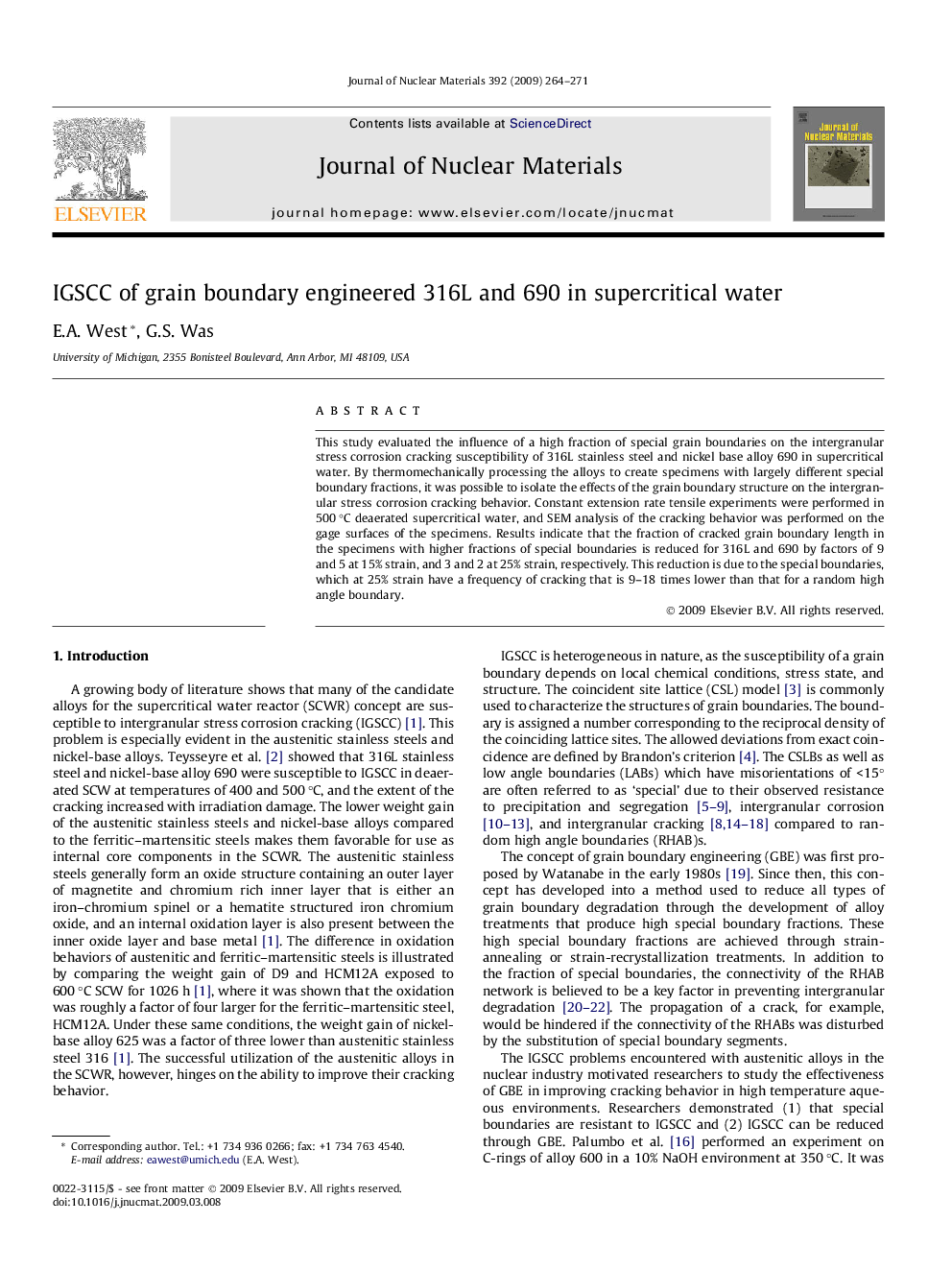| Article ID | Journal | Published Year | Pages | File Type |
|---|---|---|---|---|
| 1568422 | Journal of Nuclear Materials | 2009 | 8 Pages |
This study evaluated the influence of a high fraction of special grain boundaries on the intergranular stress corrosion cracking susceptibility of 316L stainless steel and nickel base alloy 690 in supercritical water. By thermomechanically processing the alloys to create specimens with largely different special boundary fractions, it was possible to isolate the effects of the grain boundary structure on the intergranular stress corrosion cracking behavior. Constant extension rate tensile experiments were performed in 500 °C deaerated supercritical water, and SEM analysis of the cracking behavior was performed on the gage surfaces of the specimens. Results indicate that the fraction of cracked grain boundary length in the specimens with higher fractions of special boundaries is reduced for 316L and 690 by factors of 9 and 5 at 15% strain, and 3 and 2 at 25% strain, respectively. This reduction is due to the special boundaries, which at 25% strain have a frequency of cracking that is 9–18 times lower than that for a random high angle boundary.
